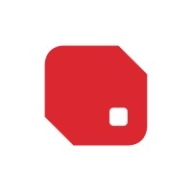

Cisco Meraki Wireless LAN and iBwave Unity are competitive in wireless network management and design. Cisco Meraki stands out due to its pricing and support, whereas iBwave Unity is favored for its comprehensive feature set.
Features: Cisco Meraki Wireless LAN offers cloud-based management, advanced security protocols, and seamless scalability. Its integrated features enhance user experience, making it a preferred choice for broad applications. iBwave Unity is notable for comprehensive RF planning, in-building network design capabilities, and tools catering to complex environments.
Room for Improvement: Cisco Meraki could improve by enhancing design tools for complex environments, offering more detailed RF planning options, and expanding advanced analytics capabilities. iBwave Unity may benefit from a more user-friendly interface, simplified deployment processes, and providing more cost-effective solutions for smaller scale projects.
Ease of Deployment and Customer Service: The deployment model of iBwave Unity is robust with extensive technical documentation and highly rated customer service, ideal for detailed design requirements. Cisco Meraki emphasizes ease and speed through its cloud-managed platform, making the deployment straightforward for users.
Pricing and ROI: Cisco Meraki's pricing is competitive and seen as cost-effective, providing positive ROI through efficient cloud management and reduced overhead. iBwave Unity involves a higher initial setup cost but offers substantial ROI in specialized environments requiring precise network planning. Meraki's lower cost appeals to varied applications, while iBwave justifies its higher price by meeting unique infrastructure needs.


iBwave Unity leverages a new UI for improved navigation with powerful 3D imaging. It enhances venue designs through detailed modeling and efficient project management, making it essential for accurate propagation studies.
iBwave Unity provides innovative modeling, focusing on improving propagation studies with realistic venue design. Key features like heatmap generation, multi-floor mapping, and signal coverage prediction deliver superior results. Its AutoCAD import and automatic calculations streamline processes, complemented by a comprehensive object database for efficient project management. While processing speed enhancements and additional RF prediction materials are desired, current features are robust in supporting large-scale deployments.
What are the key features of iBwave Unity?iBwave Unity is implemented across industries focusing on indoor network designs, facilitating WiFi, DAS, and ERRCS solutions in large facilities like malls, hotels, and business centers. These organizations rely on predictive RF heatmaps to enhance cellular and WiFi coverage, enabling design validation prior to site surveys.
We monitor all Wireless LAN reviews to prevent fraudulent reviews and keep review quality high. We do not post reviews by company employees or direct competitors. We validate each review for authenticity via cross-reference with LinkedIn, and personal follow-up with the reviewer when necessary.